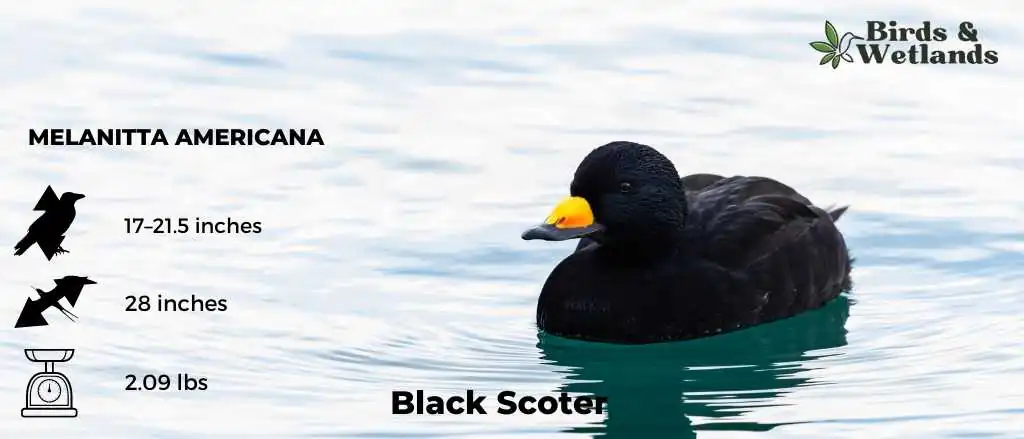The black scoter is a medium-sized sea duck. It is also known as the American scoter. It forms the subgenus Oidemia with the common scoter (Melanitta nigra), a similar species.
Black scoters can be found along the northern coasts of the United States and Canada, where they can be seen in large flocks near shorelines, shallow lakes, and rivers.
Scientific Name: Melanitta americana
Length: 430–550 mm (17–21.5 in)
Wingspan: 710 mm (28 in)
Average Weight: 950 g (2.09 lb)
Description
An adult male black scoter is a striking-looking bird with primarily dark plumage and a bright yellow knob at the base of its bill. The head and back are glossy black, while the underparts and sides of the body are brownish-black in color.
An adult female black scoter is a medium-sized sea duck that has a distinct dark cap on its rounded head. Its bill is relatively straight and small in size compared to other waterfowl.
Its overall body plumage is predominantly brownish, with a pale cheeks. However, the feathers around the neck area are darker and thicker than those elsewhere on its body.
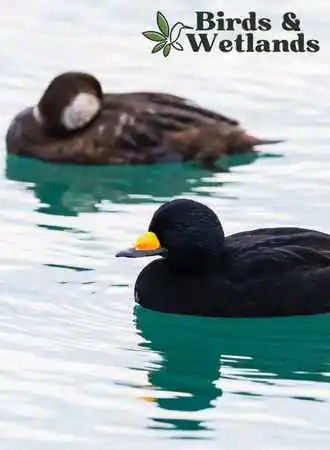
Listen to Black Scoter
Habitat & Range
These ducks breed primarily in the far north of North America, primarily in Labrador and Newfoundland to the southeast and northwest of Hudson Bay.
These birds migrate south during the winter to their major wintering areas as far south as California on the Pacific coast and northern Mexico on the Gulf of Mexico. Some birds will overwinter in North America’s Great Lakes region or travel west as rare vagrants into western Europe.
Shallow coastal waters, sheltered bays, inland lakes, estuaries, fresh water wetlands with abundant vegetation, and mudflats near rivers and streams are all part of their habitat.
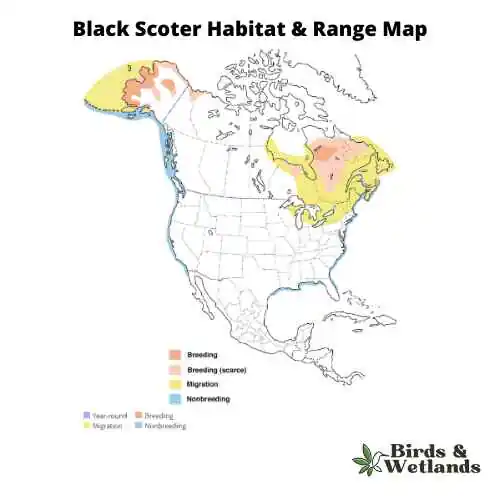
Diet & Food Habits
The black scoter is a highly adaptable, omnivorous and opportunistic feeder. Its diet consists mainly of aquatic invertebrates, insects, mayflies, and caddisflies. It also supplements its dietary needs with plant materials such as algae, seaweed, or eelgrass. The black scoter also feeds on small fish, fish eggs, and seeds.
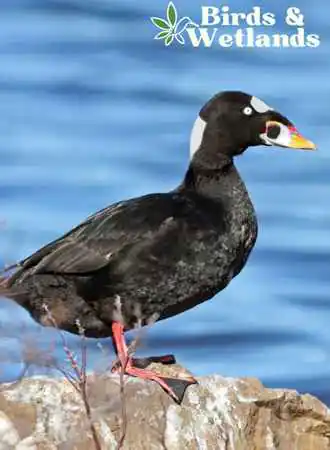
Nesting & Mating Habits
Pairs form in late fall or early spring, and the breeding season is from May to June.
The female chooses the nest site usually in the northern forest, near shallow water. She builds a nest that is usually a shallow depression lined with down and soft plant material.
The female lays 5 to 11 eggs of whitish to pale buff color. She incubates alone for 27 to 31 days.
After hatching, the chicks are covered with down and leave the nest soon after. The female then broods them during their first nights and tends to them even though they are already capable of feeding themselves. Young black scoters fledge 6 to 7 weeks from hatching.
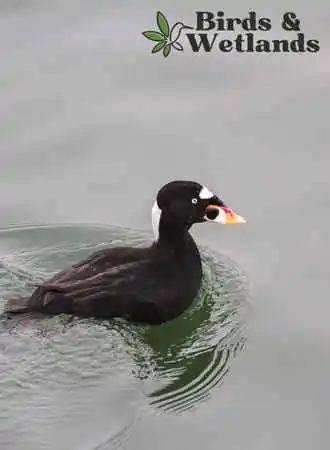
Population & Conservation Status
The global population of this duck is estimated to be 530,000 – 830,000 individuals.
The species is particularly vulnerable to oil spills and human disturbances when molting or when they lose their flight feathers and wintering.
As a result of these pressures, this duck is currently listed as Near Threatened by the IUCN.
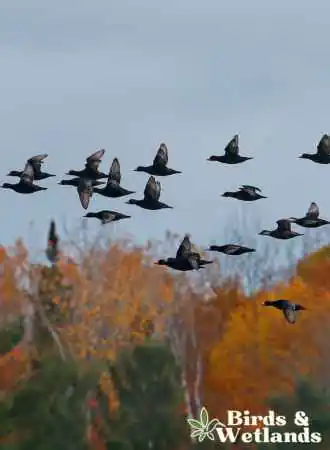
Hunting
In the United States, hunters can hunt black scoters during carefully managed seasons established by the U.S. Fish and Wildlife Service. These hunting seasons aim to ensure that hunting pressure does not exceed sustainable levels and remains balanced with the Black Scoter population in North America.
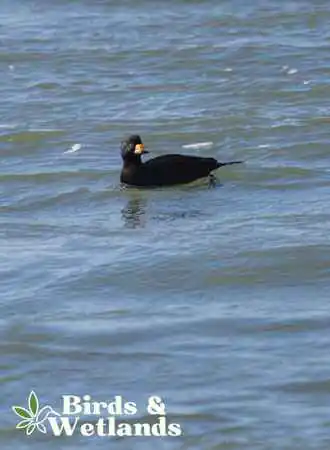
Key Points
- The female black scoter has a dark crown.
- Black scoters are omnivores, feeding on plants, invertebrates and aquatic insects.
- Male black scoters have a black bill with a large yellow knob at its base.
- Males and females form pairs in the fall or early spring.

